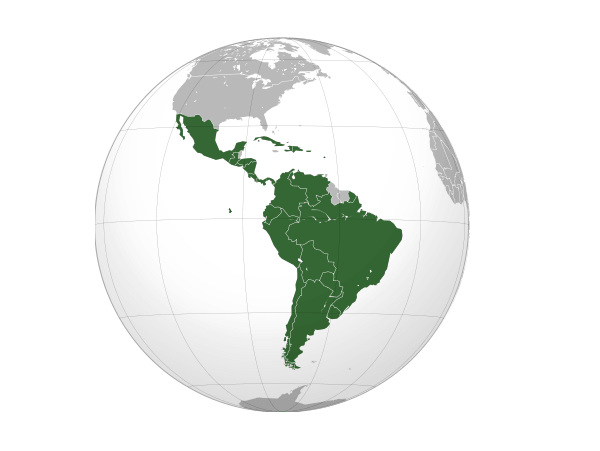(Image source: Heraldry / Wikipedia, License: CC BY-SA 3.0)
by Carlos Duez Escobedo
There is no doubt that e-commerce is experiencing a boom in the last years, and it will continue to grow on a double-digit rate. When we analyze the situation in Europe, this double-digit growth is spread all over at a very stable rate, mainly driven by pure online players, who are able to move faster than traditional brands that adapt to the new way of doing business.
If we look at the other side of the Atlantic, the Internet penetration rate accounts for 52% of the population, compared to 70% in Europe, thereby representing a great potential of growth to everything that depends on Internet connection, such as e-commerce.
However, do note that Internet connection does not equal to ecommerce buyers, as Latin America is still in the “early adopter” stage. For instance, in Mexico, only 1% of the total population is recognized as e-commerce buyers out of the 49% connected to the internet, adding up to the pile of facts making the potential of this market evident.
According to Forrester, the e-commerce in Mexico, Brazil and Argentina will continue to grow at a rate of 20% year-on-year until 2019. Nevertheless, starting a new venture in Latam will not be as easy as Sunday morning, as competition is fierce. Rocket Internet has already landed with success, setting up e-commerce giants, such as Dafiti and Linio. American brands, such as Amazon or Walmart, have the expertise, brand equity and the resources to stay on top. In fact, Amazon itself registered revenue of US$475 million in 2013 – a whopping 140% increase compared to the previous year.
When looking at Latin America, it is important to not to consider it along with Brazil as a whole. After all, Brazil’s large size does have an impact on their figures. For instance:
- Online expenditure in Brazil alone is similar to the sum of expenditure in the rest of Latin America
- 299 out of the top 500 e-commerce sites of the region are from Brazil
- In 2013, Brazilian online shops generated a revenue of US$15 billion, which is 3 times more than Mexico and Argentina combined
- Brazil is the largest mobile market in the region, with more cellphones than people.
- 61% of the Brazilian internet users have purchased online (remember what we mentioned above about Mexico’s 1% of online buyers?)
As always, the cost of entering the Brazilian market is much higher than the rest of Latin America, for example:
- There are 7 different taxes on your income, and they are cumulative, i.e. you can only calculate and pay the 7th after the 6th has been paid and so on.
- If you are an online store and decide to use cloud services outside of Brazil, be prepared to pay 40% on top of the invoice as an additional tax.
- Talent is hard to find and it is more costly than it appears. Brazilian law mandates that no one is allowed to work for more than 44 hours a week without receiving additional pay, and all employees are entitled to a 13th-month salary and 30 days of paid vacation per year, costing employers additional 40% in payroll tax.
Although entering Latin America is not an easy ride, it does offer unbelievable opportunities to grow at the speed of light for those who dare. The growing trends of Latin America are still at its early stages and the scenario for the next 5 years shows that there is still room for more players that are up to the challenge.




























